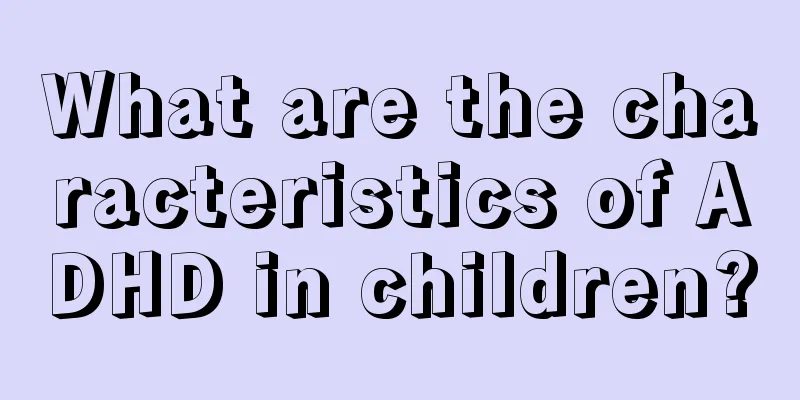What is the cause of the child's stomach rumbling and vomiting?

|
For children, the stomach and intestines are relatively fragile. Therefore, if you have stomach rumbling and vomiting in your life, it is very likely that you have eaten unclean food. Especially in summer, many foods are very easy to spoil, and children have low resistance, so vomiting and diarrhea will occur. If the situation is serious, it is best to go to the hospital for a check-up and take some oral medication. Depending on the cause, there may be different clinical manifestations. 1. Gastrointestinal food poisoning Gastrointestinal food poisoning is more common in the summer and autumn when the temperature is high and bacteria can easily grow and multiply in food. It is mainly characterized by symptoms of acute gastroenteritis such as nausea, vomiting, abdominal pain, and diarrhea. 2. Staphylococcal food poisoning It is an acute disease caused by eating food contaminated by Staphylococcus aureus and the enterotoxins it produces. Common foods that cause staphylococcal food poisoning include starch (such as leftover rice, porridge, rice and noodles), milk and dairy products, fish, eggs, etc. When contaminated food is left at room temperature of 20-22℃ for more than 5 hours, the bacteria will multiply and produce enterotoxin. This toxin is very heat-resistant and can still maintain its toxicity and cause disease after being heated and boiled for 30 minutes. The disease is more common in summer and autumn. 3. Vibrio parahaemolyticus food poisoning It is an acute or subacute disease that occurs after eating food contaminated with Vibrio parahaemolyticus or eating food containing this bacterium. Vibrio parahaemolyticus is a common food poisoning pathogen, accounting for a considerable proportion of bacterial food poisoning. Clinically, gastrointestinal symptoms such as nausea, vomiting, abdominal pain, diarrhea and watery stools are the main symptoms. The food poisoning caused by this bacteria has the common characteristics of bacterial food poisoning, such as outbreak (same time, same area, same or similar symptoms, same contaminated food), short incubation period (several hours to several days), and certain seasonality (mostly in summer and autumn). 4. Proteus food poisoning It is caused by ingesting large amounts of food contaminated by Proteus and is a food poisoning caused by conditional pathogens. Proteus is a Gram-negative bacillus, which can be divided into common Proteus and mirabilis according to different biochemical reactions. There are more than 100 serotypes. Large numbers of Proteus grow and multiply in the human body and produce enterotoxins, causing food poisoning. The incidence rate is higher in summer and autumn, and the clinical manifestations are gastrointestinal and allergic types. |
<<: Yellow tongue coating in children
>>: Can eight-month-old babies eat whole eggs?
Recommend
What changes occur in baby’s sleep after 100 days?
Sleep is very important for babies who have just ...
Developmental standards for 11-year-old children
We all know that when a child reaches the age of ...
Causes and clinical manifestations of external hydrocephalus
The baby's physical health is an issue that p...
How to treat children's rotten feet
Rotten feet is what we often call tinea pedis. It...
What should children eat to replenish zinc quickly?
Zinc deficiency in children is a relatively commo...
If your baby refuses to take medicine, parents should learn these little tricks to feed the medicine
I believe everyone knows that medicine is partial...
What should children eat to get better quickly if they have dampness?
Excessive moisture has a great impact on the body...
Causes of Teeth Grinding in Teenagers
When teenagers grind their teeth, many people can...
How to correct children's pigeon feet?
In our daily life, we often encounter people with...
Why does the child have pain around the belly button?
Pain around the belly button in children is a ver...
What are the effects of precocious puberty in children?
Precocious puberty in children mainly refers to t...
Why does a child drool?
Parents all hope that their children can grow up ...
Can children grow taller by taking calcium tablets?
Both adults and children should pay attention to ...
What should children eat to grow taller?
In daily life, we often hear many mothers complai...
What should children eat when they have prickly heat?
Children are very prone to prickly heat, especial...









